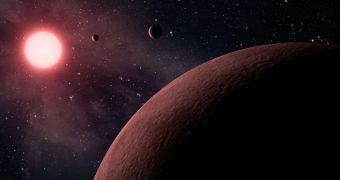The extra day we add to the month of February every four years is meant to bring us back in sync with Earth's rotation around the Sun. Astronomers now propose that a similar calendar oddity may occur on other worlds as well, given that there's someone or something there to keep track of time.
In the Gregorian calendar we use, Earth's revolution around the Sun slowly falls out of tune over a period of four years, up to the point were 24 hours are gained. By convention, every four years, the second month gets an extra day.
If that would not happen, then the seasons would most likely switch places once every 700+ years or so, due to the constant addition of one day every four years. The same situation could be applied to extrasolar planets as well, where inhabitants keep track of time in a similar manner.
On Earth, leap days primarily occur because the time it takes Earth to complete a full revolution around the Sun cannot be accurately divided into days of equal length. Primarily, this happens because an Earth day is not 24 hours long.
“We have a leap year because the spin rate of the Earth, which is 23 hours and 56 minutes, doesn't divide completely evenly into the length of the year, which is 365.242374 days,” University of California in Santa Cruz astronomer Greg Laughlin explains.
“You can't fit an exact number of spins into one trip around the Sun without having some left over,” he adds. These leftovers take four years to make an extra day, which we include in our calendars.
The astronomer is part of a team of scientists conducting the Lick Carnegie Exoplanet Survey. This endeavor uses the Keck Telescope, in Hawaii, to find alien worlds around distant stars. Thus far, more than 700 exoplanets have been confirmed, with an additional 2,325 proposed to exist.
Laughlin says that all planets whose spin periods don't fit neatly with their orbital periods will experience leap years. “So one could image you would have to design leap year-like systems for them. The degree to which they mismatch would be random,” he says, quoted by Space.
The only exceptions to this rule are tidally locked worlds, planets located so close to their parent stars that tidal forces prevent them from rotating along their own axis. The Moon, for example, is tidally locked to Earth, so we only see one of its faces.
“If tidal locking hasn't occurred then there's nothing to inform the planet about how fast it's spinning relative to its year. The spin of the planet depends on the gory details of its history,” Laughlin concludes.

 14 DAY TRIAL //
14 DAY TRIAL //